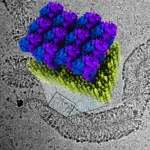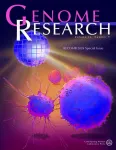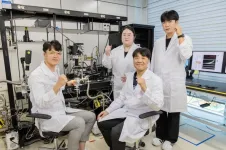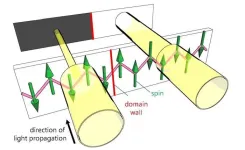(Press-News.org) About The Study: In this cross-sectional study of the U.S. population during the COVID-19 public health emergency, excess mortality occurred in all racial and ethnic groups, with disparities affecting several minoritized populations. The greatest relative increases occurred in populations ages 25 to 64. Documented differences deviated from pre-pandemic disparities.
Corresponding Author: To contact the corresponding author, Jeremy Samuel Faust, MD, MS, email jsfaust@bwh.harvard.edu.
To access the embargoed study: Visit our For The Media website at this link https://media.jamanetwork.com/
(doi:10.1001/jamanetworkopen.2024.38918)
Editor’s Note: Please see the article for additional information, including other authors, author contributions and affiliations, conflict of interest and financial disclosures, and funding and support.
# # #
Embed this link to provide your readers free access to the full-text article This link will be live at the embargo time http://jamanetwork.com/journals/jamanetworkopen/fullarticle/10.1001/jamanetworkopen.2024.38918?utm_source=For_The_Media&utm_medium=referral&utm_campaign=ftm_links&utm_term=101124
About JAMA Network Open: JAMA Network Open is an online-only open access general medical journal from the JAMA Network. On weekdays, the journal publishes peer-reviewed clinical research and commentary in more than 40 medical and health subject areas. Every article is free online from the day of publication.
END
Racial and ethnic disparities in age-specific all-cause mortality during the COVID-19 pandemic
JAMA Network Open
2024-10-11
ELSE PRESS RELEASES FROM THIS DATE:
Delft scientists discover how innate immunity envelops bacteria
2024-10-11
Delft scientists discover how innate immunity envelops bacteria
The protein GBP1 is a vital component of our body’s natural defence against pathogens. This substance fights against bacteria and parasites by enveloping them in a protein coat, but how the substance manages to do this has remained unknown until now. Researchers from Delft University of Technology have now unravelled how this protein operates. This new knowledge, published in Nature Structural & Molecular Biology, could aid in the development of medications ...
Workforce diversity is key to advancing One Health
2024-10-11
[Vienna, October 11, 2024] – A new article highlights a critical issue in the One Health approach—an emerging global framework for tackling complex health challenges at the intersection of human, animal, and environmental health. In the article in The Lancet Planetary Health, scientists Amélie Desvars-Larrive and Fariba Karimi from the Complexity Science Hub (CSH) point out that One Health's current framework fails to explicitly address workforce diversity.
According to Desvars-Larrive and Karimi, ...
Genome Research publishes a special issue on innovations in computational biology
2024-10-11
October 11, 2024 – Genome Research (https://genome.org) publishes a special issue highlighting novel advances in computational biology.
In collaboration with the International Conference on Research in Computational Molecular Biology (RECOMB), Genome Research publishes a collection of 20 computational methods and their applications in genomics including spatial, single-cell, and long-read sequencing. These include algorithmic innovations in genomic variation analysis, privacy-preserving algorithms, DNA structural properties, cancer genomics, ...
A quick and easy way to produce anode materials for sodium-ion batteries using microwaves
2024-10-11
The research team led by Dr. Daeho Kim and Dr. Jong Hwan Park at the Nano Hybrid Technology Research Center of the Korea Electrotechnology Research Institute (KERI) has developed a groundbreaking process technology that enables for ultrafast, 30-second preparation of hard carbon anodes for sodium-ion batteries using microwave induction heating.
One of the next-generation secondary batteries, the sodium-ion battery uses sodium (Na) in lieu of the current mainstay, lithium (Li). Sodium, the main component of salt, is more than a thousand times more abundant than lithium and is easier to extract and refine. Furthermore, its lower reactivity compared ...
‘Inside-out’ galaxy growth observed in the early universe
2024-10-11
Astronomers have used the NASA/ESA James Webb Space Telescope (JWST) to observe the ‘inside-out’ growth of a galaxy in the early universe, only 700 million years after the Big Bang.
This galaxy is one hundred times smaller than the Milky Way, but is surprisingly mature for so early in the universe. Like a large city, this galaxy has a dense collection of stars at its core but becomes less dense in the galactic ‘suburbs’. And like a large city, this galaxy is starting to sprawl, with star formation accelerating in the outskirts.
This is the earliest-ever detection of inside-out galactic growth. ...
Protein blocking bone development could hold clues for future osteoporosis treatment
2024-10-11
Scientists have identified a protein that blocks the activity of bone-forming cells (osteoblasts) by stopping them from maturing during the journey to sites of bone formation, a new study has found.
In a paper published in Communications Biology today (Friday 11 October 2024), a team of researchers led by Dr Amy Naylor and Professor Roy Bicknell along with their team including Dr Georgiana Neag from the University of Birmingham have found that protein CLEC14A, which is found on blood vessel cells called endothelial ...
A new method makes high-resolution imaging more accessible
2024-10-11
A classical way to image nanoscale structures in cells is with high-powered, expensive super-resolution microscopes. As an alternative, MIT researchers have developed a way to expand tissue before imaging it — a technique that allows them to achieve nanoscale resolution with a conventional light microscope.
In the newest version of this technique, the researchers have made it possible to expand tissue 20-fold in a single step. This simple, inexpensive method could pave the way for nearly any biology lab to perform nanoscale imaging.
“This democratizes imaging,” says Laura Kiessling, the Novartis Professor ...
Tiny magnetic discs offer remote brain stimulation without transgenes
2024-10-11
Novel magnetic nanodiscs could provide a much less invasive way of stimulating parts of the brain, paving the way for stimulation therapies without implants or genetic modification, MIT researchers report.
The scientists envision that the tiny discs, which are about 250 nanometers across (about 1/500 the width of a human hair), would be injected directly into the desired location in the brain. From there, they could be activated at any time simply by applying a magnetic field outside the body. The new particles could quickly find applications in biomedical research, and eventually, after sufficient testing, ...
Illuminating quantum magnets: Light unveils magnetic domains
2024-10-11
When something draws us in like a magnet, we take a closer look. When magnets draw in physicists, they take a quantum look.
Scientists from Osaka Metropolitan University and the University of Tokyo have successfully used light to visualize tiny magnetic regions, known as magnetic domains, in a specialized quantum material. Moreover, they successfully manipulated these regions by the application of an electric field. Their findings offer new insights into the complex behavior of magnetic materials at the quantum level, paving the way for future technological advances.
Most of us are familiar with magnets that stick to metal surfaces. But what about those that do not? Among ...
Different types of teenage friendships critical to wellbeing as we age, scientists find
2024-10-11
Being a teenager is hard, confusing — and crucially important. Scientists studying teenage socializing have found that teenaged friendships could lay essential foundations for wellbeing in later life, and that not just the kinds of friendships teenagers experience but the timing of those friendships is critical.
“A teen’s perception of how broadly socially accepted they are by their peers in early adolescence is particularly influential in predicting adult wellbeing,” said Emily Shah of the University of Arkansas, first author of the article in Frontiers in Developmental Psychology. “Conversely, in late adolescence, the quality of their more ...
LAST 30 PRESS RELEASES:
Numbers in our sights affect how we perceive space
SIMJ announces global collaborative book project in commemoration of its 75th anniversary
Air pollution exposure and birth weight
Obstructive sleep apnea risk and mental health conditions among older adults
How talking slows eye movements behind the wheel
The Ceramic Society of Japan’s Oxoate Ceramics Research Association launches new international book project
Heart-brain connection: international study reveals the role of the vagus nerve in keeping the heart young
Researchers identify Rb1 as a predictive biomarker for a new therapeutic strategy in some breast cancers
Survey reveals ethical gaps slowing AI adoption in pediatric surgery
Stimulant ADHD medications work differently than thought
AI overestimates how smart people are, according to HSE economists
HSE researchers create genome-wide map of quadruplexes
Scientists boost cell "powerhouses" to burn more calories
Automatic label checking: The missing step in making reliable medical AI
Low daily alcohol intake linked to 50% heightened mouth cancer risk in India
American Meteorological Society announces Rick Spinrad as 2026 President-Elect
Biomass-based carbon capture spotlighted in newly released global climate webinar recording
Illuminating invisible nano pollutants: advanced bioimaging tracks the full journey of emerging nanoscale contaminants in living systems
How does age affect recovery from spinal cord injury?
Novel AI tool offers prognosis for patients with head and neck cancer
Fathers’ microplastic exposure tied to their children’s metabolic problems
Research validates laboratory model for studying high-grade serous ovarian cancer
SIR 2026 delivers transformative breakthroughs in minimally invasive medicine to improve patient care
Stem Cell Reports most downloaded papers of 2025 highlight the breadth and impact of stem cell research
Oxford-led study estimates NHS spends around 3% of its primary and secondary care budget on the health impacts of heat and cold in England
A researcher’s long quest leads to a smart composite breakthrough
Urban wild bees act as “microbial sensors” of city health.
New study finds where you live affects recovery after a hip fracture
Forecasting the impact of fully automated vehicle adoption on US road traffic injuries
Alcohol-related hospitalizations from 2016 to 2022
[Press-News.org] Racial and ethnic disparities in age-specific all-cause mortality during the COVID-19 pandemicJAMA Network Open




